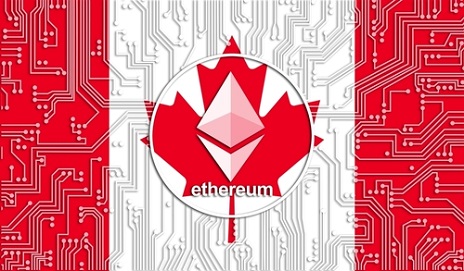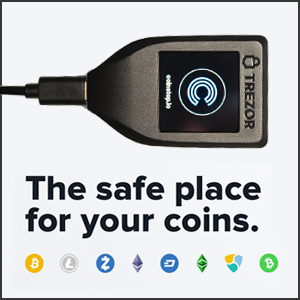
| Get all the essential market news and expert opinions in one place with our daily newsletter. Receive a comprehensive recap of the day’s top stories directly to your inbox. Sign up here! |
 (Kitco News) – The Bank of Canada (BoC) has published a new staff note on decentralized finance (DeFi), providing investors with an overview of the growing sector and highlighting the challenges and risks involved with its use and integration into the broader financial system.
(Kitco News) – The Bank of Canada (BoC) has published a new staff note on decentralized finance (DeFi), providing investors with an overview of the growing sector and highlighting the challenges and risks involved with its use and integration into the broader financial system.
“DeFi is the provision of financial services without relying on traditional intermediaries,” the note said. It “operates within a multi-layered structure” composed of the bottom (or settlement) layer, where the blockchain records and settles transactions; the asset layer, which includes native tokens, stablecoins, and other financial services; and the application layer, which hosts protocols that offer financial services such as lending and asset management.
The note highlighted smart contracts as the organizing force behind DeFi, saying that they effectively serve as a custodian for crypto platforms instead of relying on a trusted third party.
“Traditionally, loans between lenders and borrowers rely on a trusted third party (e.g., a bank) that provides custodian services to safeguard collateral pledged as security for a loan,” the note said. “The third party’s incentive to behave properly often depends on external law enforcement as well as the need to maintain a good reputation to stay in business. Without a trusted party, as in the crypto space, a smart contract acts as the custodian.”
The BoC also highlighted that “Smart contracts execute automatically based on predetermined conditions,” which “eliminates the incentive problems that a traditional intermediary might face.”
Thanks to the functionality of smart contracts, they are able to decentralize a variety of financial services, including “decentralized stablecoins, which facilitate payments; decentralized exchanges, which enable asset trading; lending protocols; and decentralized asset management platforms,” they said.

Financial services provided by crypto-based finance versus traditional finance. Source: BoC
The BoC said one of the most important features of DeFi is its “composability.”
“Because smart contracts are open source, their code can be pieced together like Lego bricks to create new products,” they said. “For example, one can build on an exchange contract and a lending contract to create a smart contract for margin trading. Composability enables the DeFi system to grow rapidly and increases the amount of interconnectedness across its applications.”
Pros and cons of DeFi
Moving on to the question of why investors might consider DeFi, the BoC said the rise of decentralized finance “was partly motivated by the fact that some transactions in traditional finance are time- and cost-intensive due to inefficient legacy systems and processes as well as monopoly profits earned by incumbents.”
They gave the example of cross-border payments, which “involve multiple currencies and a small number of correspondent banks, resulting in cost and time inefficiencies. Securities settlement also requires reconciliations across multiple ledgers.”
The BoC said DeFi can address these challenges and transform the financial system by increasing service offerings, competition, and transparency.
“A unified ledger can reduce frictions in the legacy system and expand the scope of financial services currently being provided,” helping to improve service offerings, they said. Since “everyone is allowed to enter the crypto space to provide DeFi services and use services offered by others,” DeFi can increase competition by “reducing market power and concentration.”
It also helps increase transparency by “Replacing intermediaries with smart contracts increases the transparency of the balance sheets and governance of DeFi platforms, thus reducing fraud and custodian risk,” they said.
As for the key challenges that “hinder DeFi from realizing its potential,” the BoC highlighted the limits of tokenization, a high concentration of interconnectedness within the DeFi system, and the growth of unregulated centralized finance (CeFi) intermediaries.
“Only tokenized assets can be recorded on the blockchain and interact with smart contracts,” the BoC said. “However, few real-world assets have been tokenized thus far, resulting in a self-referential system mainly focused on speculative crypto trades. The contribution to the real-world economy remains minimal.”
In terms of centralization, the BoC said, “While each [DeFi] sector usually consists of multiple service providers, known as protocols, most sectors are rather concentrated because most values are locked into only a few DeFi protocols. Any operational or financial shocks to these key protocols could lead to system-wide spillover effects.”
As far as the dangers posed by unregulated CeFi, the BoC said, “While they also offer financial services using cryptoassets, they differ from DeFi in that they are run by people instead of smart contracts, which exposes investors to custodian risk and lacks transparency. Recent bankruptcies of centralized platforms like Celsius and FTX highlight the risks associated with these unregulated CeFi entities.”
Regulatory concerns
When it comes to the regulatory concerns posed by DeFi, the BoC warned that while the emerging sector “currently poses limited risks to financial stability, its connections to the real economy may increase over time.”
“Many vulnerabilities in DeFi mirror those in the traditional financial system, such as run risk with stablecoins, leverage associated with DeFi lending, and interconnectedness among protocols,” they said. “DeFi also presents new, blockchain-specific challenges.”
These include new points of failure, which “emerge when the blockchains connect with each other or with the real world (e.g., cross-chain bridges and price oracles),” and “new amplification channels such as flash loans allow malicious actors to acquire billions of dollars in funding without any credit checks or collateral requirements.”
They also said the “anonymous and borderless nature of public blockchains complicates regulatory oversight.”
“DeFi has grown rapidly in scale and scope, forming a complex ecosystem with a high degree of interconnectedness. Its innovative elements, such as smart contracts, composability, and tokenization, hold potential for future monetary and payment systems,” the BoC said. “However, challenges remain, as DeFi introduces new risks to the financial system. Policy-makers and regulators need to strike a balance between promoting innovation and mitigating risk.”
Disclaimer: The views expressed in this article are those of the author and may not reflect those of Kitco Metals Inc. The author has made every effort to ensure accuracy of information provided; however, neither Kitco Metals Inc. nor the author can guarantee such accuracy. This article is strictly for informational purposes only. It is not a solicitation to make any exchange in commodities, securities or other financial instruments. Kitco Metals Inc. and the author of this article do not accept culpability for losses and/ or damages arising from the use of this publication.










